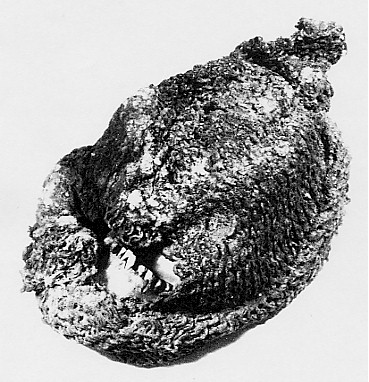| Innehållsförteckning |
Några frågor rörande deras konstruktion samt en jämförelse med en i England återfunnen, som äkta betraktad ringbrynjehuva.
Tommy Hellman

| Uppsats i påbyggnadskurs Institutionen för arkeologi Stockholms Universitet Vårterminen 1995 Handledare Bo Petré |
This paper contains an account of an examination that I have made of mail coifs from the massgraves outside Wisby on Gotland at a site known as Korsbetningen. Here those who were killed in and after the battle fought here in July 1361 between the troops of King Valdemar of Denmark and the armed peasantry of Gotland, were buried, many of the dead still in armour or parts thereof. The graves have been excavated during the first decades of our century and the finds have been published in Bengt Thordemans work "Armour from the Battle of Wisby 1361" (Thordeman 1939). The material was however abundant and everything could not be examined with the same accuracy. I wanted to know more about the mail coifs and my examination did not disappoint me. Inside some of the coifs I found traces of linen, most probably rests of the lining I was looking for. The coifs that could be typologically determined turned out to be of similar type, having no ventail (a partly loose flap of mail to protect the chin and mouth). The lower parts of the coifs consisted of two square or rectangular flaps of mail protecting the upper part of the breast and back respectively. This kind of coif can be seen in European art mainly from the latter half of the l3th and the beginning of the l4th century. None of the examined coifs had a vertical opening in the back of the neck to be closed by lacing for better fit, like a mail coif, believed to be genuine, preserved in the Royal Scottish Museum, Edinburgh (Burgess - Robinson 1956). A comparison has been made between the latter and one of the coifs from Korsbetningen (175 30 A2) which was cleaned in 1983 and where the pattern of the rings can be determined. Similarities in the construction and distribution of the idle rings (for explanation of the terminology see Burgess - Robinson 1956) support the opinion that the "Edinburgh coif" is an original mail coif from the l3th or l4th century.
1
| Innehållsförteckning |
Text © 1995 Tommy Hellman
HTML-version Patrik Djurfeldt
![]()